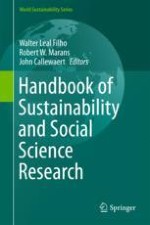2018 | OriginalPaper | Chapter
Bridging the Gap Between Policy and Action in Residential Graywater Recycling
Author : L. Bell
Published in: Handbook of Sustainability and Social Science Research
Publisher: Springer International Publishing
Activate our intelligent search to find suitable subject content or patents.
Select sections of text to find matching patents with Artificial Intelligence. powered by
Select sections of text to find additional relevant content using AI-assisted search. powered by
